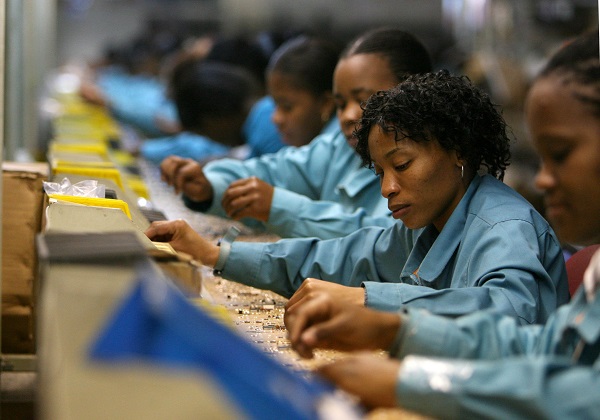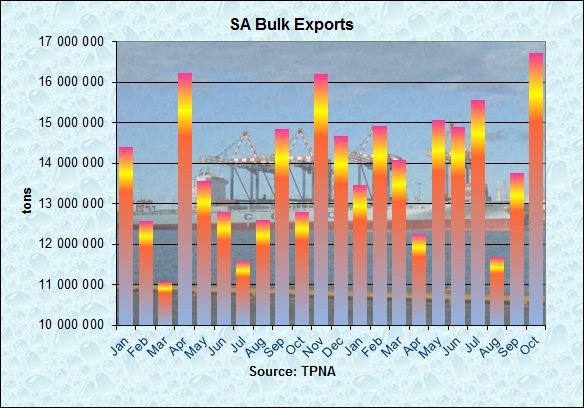

Follow us on:  
|

South African bulk exports surged by 30.7 per cent y/y in October to a new record

Is the South African economy finally turning a corner? [Xinhua]
The October 2017 tonnage eclipsed the previous record of 16.4 Mt set in January 2015 and was set despite a severe storm that disrupted port operations in the main port of Durban.
Inventory replenishment and surging net exports were supposed to be the drivers of economic growth this year, but it now seems as if domestic households, which account for some 60 per cent of economic activity, are joining the party as well.
In both August and September, real retail sales grew by 5.4 per cent y/y, which was the highest y/y increase since May 2013. This brought the increase for the third quarter to 4.1 per cent y/y, almost double the 2.2 per cent y/y rise seen in the second quarter. The recovery in consumer demand was not confined to retail sales as new vehicle sales have shown a y/y increase from June to October.
In September, the second quarter 2017 gross domestic product (GDP) data released by Statistics South Africa exceeded the consensus forecast of 2.1 per cent as it came in at a 2.5 per cent growth rate at a seasonally adjusted annualised (saa) pace. The first quarter contraction was revised to show a 0.6 per cent drop rather than a 0.7 per cent fall.
On a year ago basis growth accelerated to 1.1 per cent in the second quarter from 1.0 per cent in the first quarter and 0.7 per cent in the fourth quarter.
Agriculture, mining hold strong

In terms of detail, the production measure of GDP showed that the weakness in the first quarter was broad-based with only the agriculture and mining sectors expanding out of the ten production sectors, while in the second quarters it was only two sectors that declined. These sectors were construction and government services.
From an expenditure point of view, there were only three out of the six categories that had a negative contribution to growth. Exports soared by 14.4 per cent quarter-on-quarter (q/q) saa to contribute 4.1 percentage points to growth, but this was offset to a large extent by a 13.3 per cent q/q saa jump in imports which reduced growth by 3.9 percentage points.
Inventories saw their second consecutive increase in the second quarter and that is likely to be boosted in the third quarter as the record maize harvest of 16.7 Mt needs to be stored. Harvesting takes place from May to August, so some is already included in the second quarter.
Consumers were in fact fairly confident as final consumption expenditure by households soared by 4.7 per cent q/q saa in the second quarter after a contraction in the first quarter.
The main positive contributors to growth in household consumption were food and non-alcoholic beverages (up 10.1 per cent q/q saa and contributing 1.9 percentage points), clothing and footwear (up 26.7 per cent q/q saa and contributing 1.4 percentage points), and the ‘other’ category of expenditure ( up 8.2 per cent q/q saa and contributing 1.0 percentage point).
By Helmo Preuss in Cape Town, South Africa for The BRICS Post